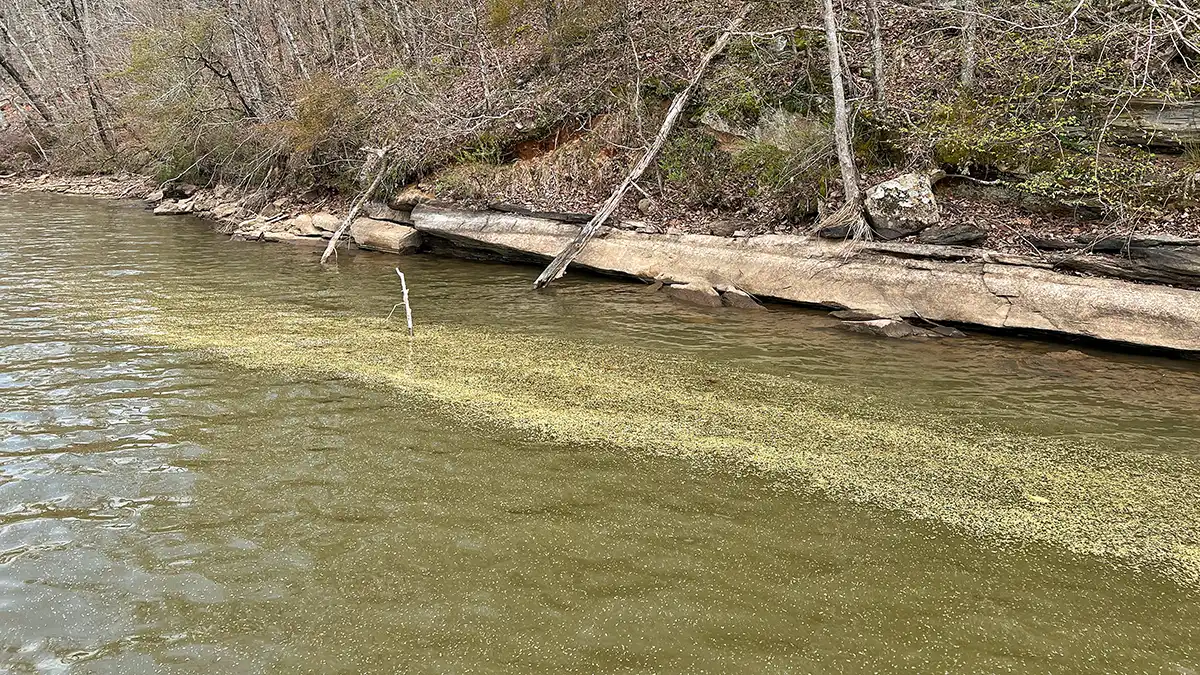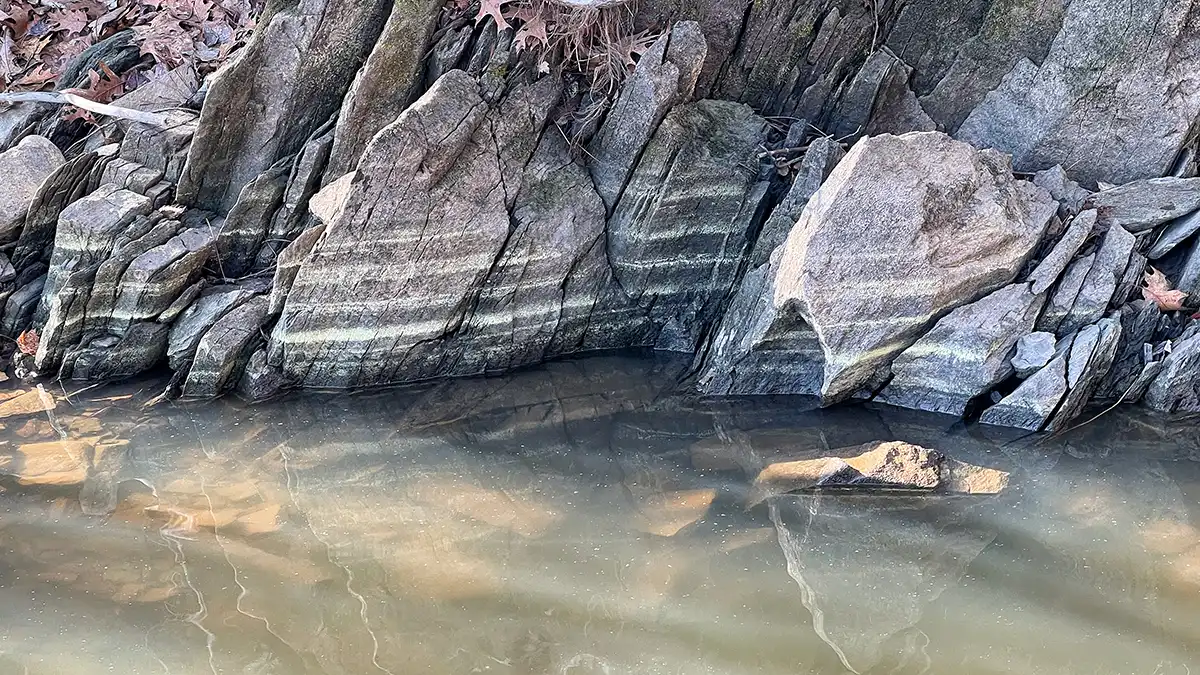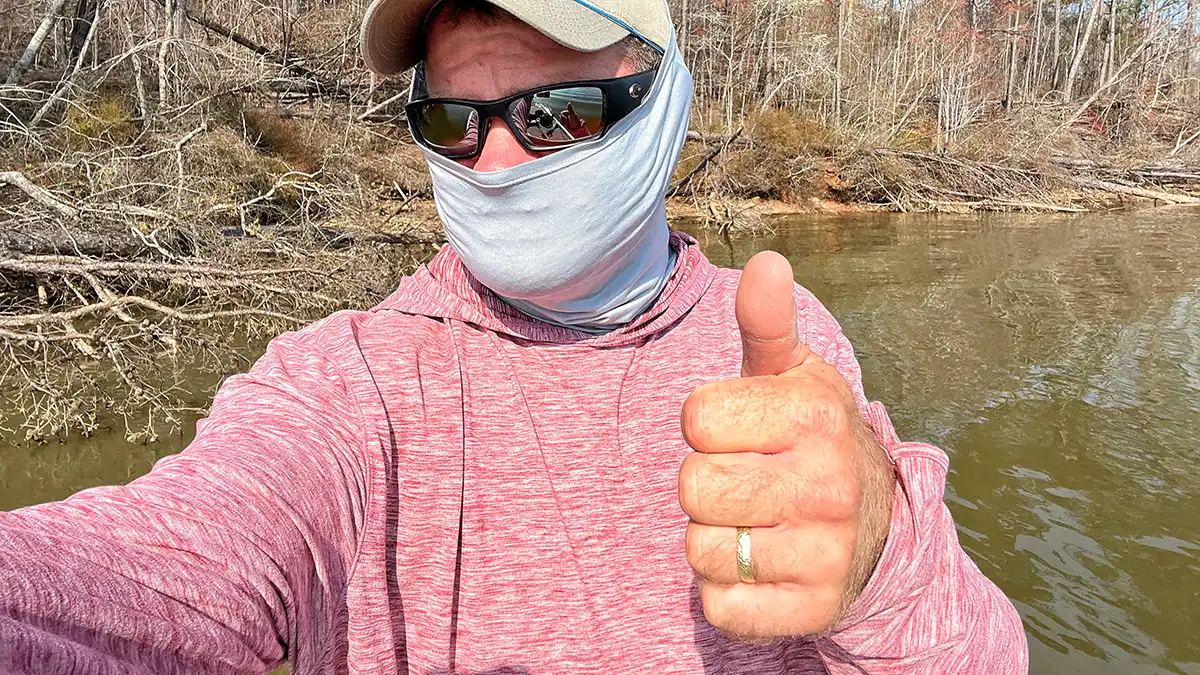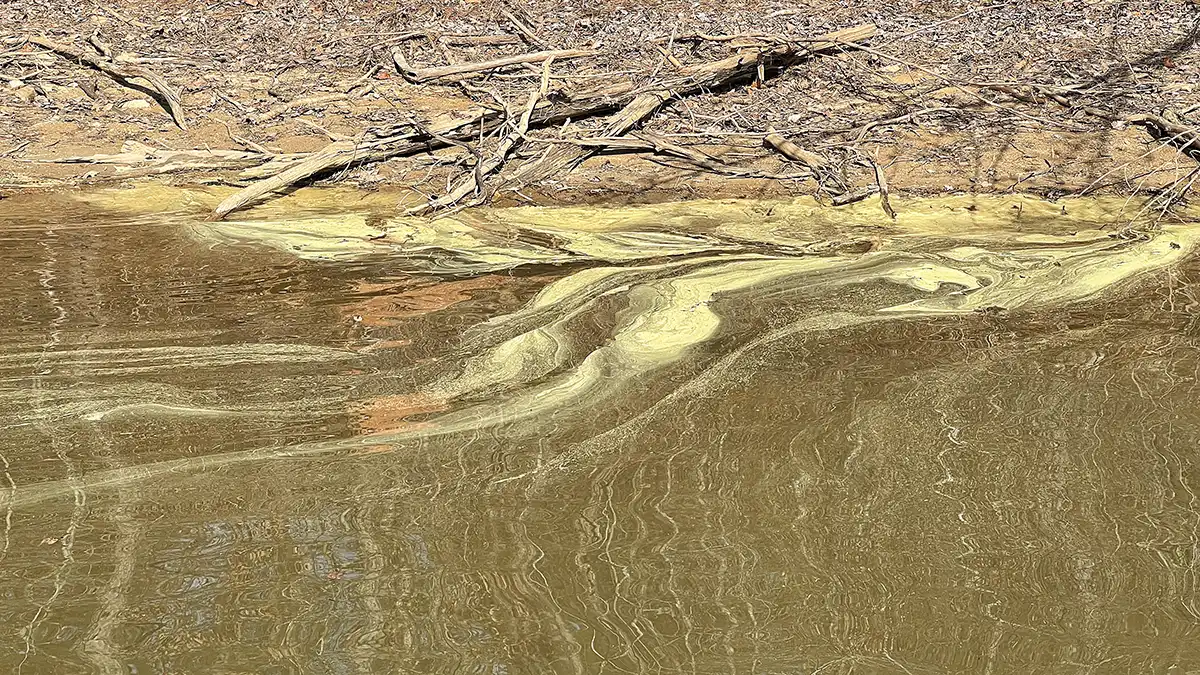Warning: Undefined variable $k in /home/nginx/domains/wired2fishcom.bigscoots-staging.com/public/wp-content/themes/understrap-child-0.6.0/functions.php on line 984
Warning: Undefined variable $k in /home/nginx/domains/wired2fishcom.bigscoots-staging.com/public/wp-content/themes/understrap-child-0.6.0/functions.php on line 987
To any non-fisherman, a dust cloud of yellow pollen sweeping across the horizon is about as welcoming of a sight as a Chick-Fil-A sign on a Sunday—nothing good can come of it. However for the angler, this congestive mess is pixie dust, settling on the water’s surface, seemingly activating the almost magical movement of bass to the beds. We wait all year for this dust to settle. Here’s how to take advantage of and contend with it on the water once it arrives.

PROS AND CONS SHORT LIST:
Pros of pollen:
- Clear sign to look shallow
- Creates cover
- Helps you tell if someone has been through an area
- Helps read current and wind
- Tells the recent water levels
Cons of pollen:
- Impedes visibility
- Rough on the allergies

PROS OF POLLEN
In many ways, pollen is a good thing in the eyes of a fisherman (not literally though). First and foremost, pollen is a clear visual indicator that it’s time to look shallow. When spring sets in and the trees, bushes and flowers start to produce and release pollen, the bass are simultaneously getting their cues from nature to push shallow to spawn. As soon as you see pollen in the air, on the water or on your car, it’s time to get to the lake and look shallow.
Pollen also creates cover, in the form of pollen mats, to be found primarily in the backs of pockets. Bass like to have something over their heads. They don’t have eyelids for one, so matted vegetation, docks, bushes and even a thick layer of pollen on the water is a welcomed reprieve from the bright light above. They are also more protected from aerial threats, like birds of prey, when they have something overhead. Looking for pollen mats are great places to throw bait in the spring.
You can also read the recent activity of an area by looking at the pollen on the water. Look for thin lines through the pollen, left by the casts of an angler that’s not long left the area. You may also see blowholes in the pollen, showing where a fish ate something on top of the water. In addition, you can use the pollen to decipher if someone has driven, fished or idled through an area. You can even use the pollen to tell which direction the wind has blown in recently. Lastly, pollen can help you read the current, look for where it’s piling up in the eddies.
Pollen deposits can be used to gauge the recent water levels on rivers, creeks and flood-control lakes. Heavy rains often cause waters to rise on fisheries like this in the spring. When the waters recede, you can typically see a pollen line, much the way you’d be able to see a mud-line on some fisheries.
You can use this information to tell how high the water has been in recent days. If it’s been stable, you should probably focus your efforts in shallow areas. Perhaps, if there’s been a lot of fluctuation in the water, it’s a good idea to look to the closer drop-offs where fish may have pulled out to, as they tend to do when water drops drastically and quickly.

CONS OF POLLEN
The most obvious con of pollen is that it is brutal on your allergies. You can keep medicine on hand and in your system to help with this, but it also helps to wear a buff, to help keep as much of it out of your system as possible. Since the sun is often out this time of year anyway, the buff is a good tool to use to keep the harmful effects of the sun at bay. Whatever pollen it can keep out is just an added benefit.
Pollen on (and in) the water also cuts down on visibility. If there’s a lot of wind or waves from boat traffic in an area, the pollen will actually mix with the water and make it a cloudy yellow. It’s usually a good idea to abandon an area like this all together. Since the pollen naturally stays on top of the surface when the conditions are calm, you can forgo an isolated area with cloudy water and not give up a lot of ground.
What about when the pollen is impeding your view because it is on the surface? As long as it’s not thick—like the mats we discussed earlier—you can use a simple trick to disperse the pollen in a particular area. For years, bed fishing anglers have used a mixture of water and a little dish soap to clear the way for them to see bass on beds.
Filling either a water gun or spray bottle with a little soapy water gives the angler the ability to spray a stream of the solution onto a spot on the water. As the soapiness spreads out across the surface, it pushes the pollen out of the way, revealing what’s underneath.
Don’t overdo it with this, too many suds isn’t good for the environment (probably) and you can’t realistically cover a lot of water doing this. It’s usually best to simply fish your baits through the surface pollen. If you do find a bass on bed, a quick shot of suds will help you see it better.

FINAL THOUGHTS
Pollen is annoying for most. For me, it’s a beautiful thing. As soon as I see it, I make plans to hit the water as soon as I can. I keep the windows rolled up in the truck, pop an allergy pill on the way, put the buff on and prepare for a big one to bite.
If you learn to read the pollen on the water and on the adjacent cover, you’ll be able to tell a lot about the conditions and characteristics of where you’re fishing. Keep a spray bottle of soapy water handy to clear the way if you spot a bedder, then just embrace the goodness of creation. Take a moment to take it all in, keep the pollen out the best you can, and marvel at the process and order of it all. Each spring, we know, the big ones are coming. That gives us all something to look forward to, pollen and all.












